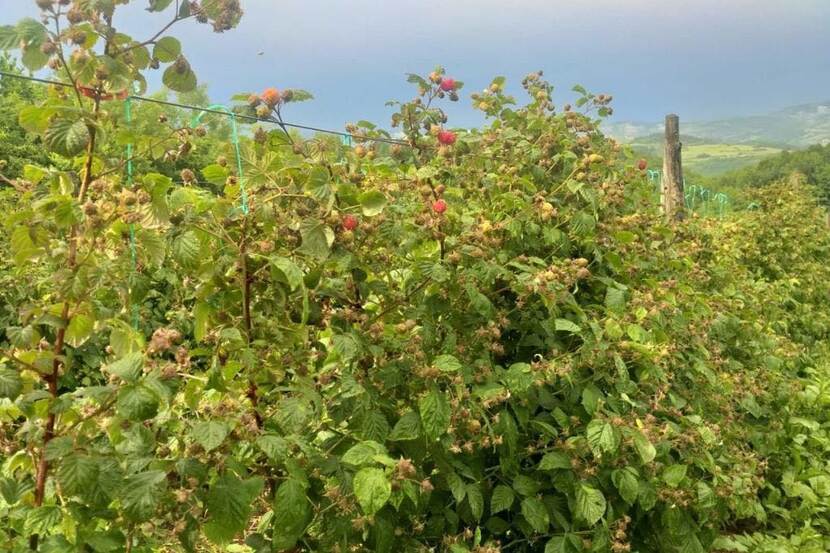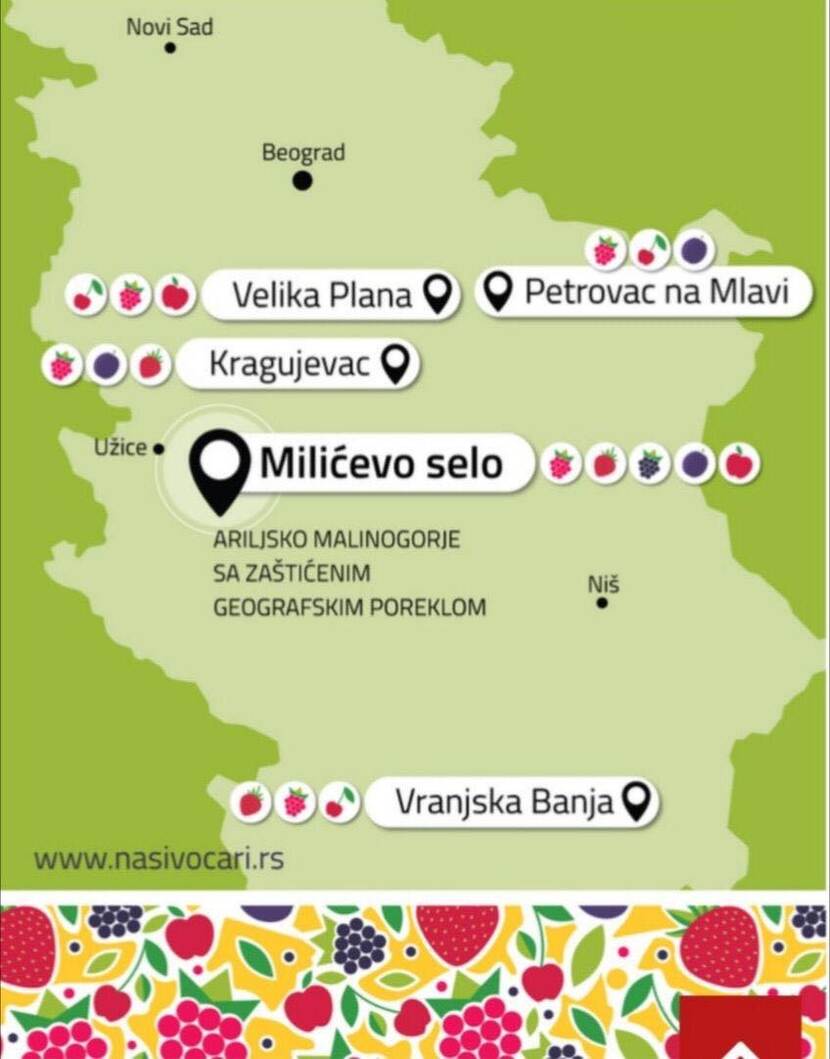Serbia Newsflash Week 24
Hailstorms, EU funding proposals, wind energy, fuel tax and nature protection - The last week in Serbian agriculture

Hail and heavy rain destroyed 30% of raspberries, seasonal workers for berry picking needed
The bad weather has so far destroyed 30% of raspberries, and purchasers are already offering a price of RSD 250 per kg (€2.1) , while last year, the price ranged between RSD 65 and RSD 170, the President of the Association of Raspberry Growers of Serbia stated yesterday. He recalled that last summer cold storage owners offered low prices claiming they would not be able to resell the raspberries, but according to export documentation from the customs, they sold them at €2.43-2.70 per kg, which is nearly 100% more than the purchasing price. Over the past month and a half, frequent storms involving hail, wind, and heavy rainfall have prevented the growers from nourishing and protecting that fruit orchards.
The raspberry harvest season will start in seven, but the number of workers is half of the number needed. Berry pickers are needed throughout central Serbia, especially in western Serbia where the majority of raspberry orchards are located. Food and accommodation will be provided and a salary of approximately €25/day. Regardless better conditions and prices offered this year, numbers of available seasonal workers are low. The biggest problem of orchard owners is to find professional pickers. Lot of seasonal workers that used to be hired in Serbia left for Western European countries where daily fees and conditions are more favorable. Starting from mid-June, picking season will start in Macva, region that starts first with raspberry field works. In three weeks’ time Western Serbia will enter full picking season.
EC proposing an increase in IPA funds for WB countries
The European Commission (EC) is proposing an increase in pre-accession IPA funds (Instrument for Pre-Accession Assistance) for the countries of the Western Balkans in the next EU budget and is preparing an economic plan for the region. The new budget envisages €14.5 billion of pre-accession assistance for the countries of the Balkans and Turkey, in relation to the €11.7 billion that was allocated in the period between 2014 and 2020. In addition, the proposal of the European Commission to allocate an additional billion euros from the current budget was announced, which the countries in the neighborhood of the EU and the Western Balkans could use to combat the economic consequences of the pandemic. The EC is trying to prevent the widening of the economic gap after the pandemic. All this will enable the EC to come out in the fall with a significant economic and investment plan for the Western Balkans, to start working on connections in the field of energy, agriculture, transport, on the green agenda, as well as to include the region in the EU digital agenda and bring it as close as possible to the EU economy.
The goal of the economic and investment plan is to compensate for the fact that the Western Balkan countries are falling behind the EU average. The situation is different when a country is an EU member state, because then it can count on the full solidarity of all other members. The solidarity is one of the reasons why the Balkan countries want to be part of the EU. The proposal for economic recovery called “NextGenerationEU” for the period 2021-2027 refers to the growing needs for humanitarian aid in the most vulnerable parts of the world.

South Banat region becomes the "little Netherlands": another wind farm is planned
The goal of the municipality of Kovacica from the Banat region, in north-eastern Vojvodina, is to create a plan for the construction of a wind turbine plant, as well as other energy plants that produce electricity from renewable resources. The first wind farm in Vojvodina was opened in the Kovacica municipality in 2019. By its Detailed Regulation Plan, the municipality envisages the wind farm with 31 wind turbines, each with an individual capacity of about 7 MW and a transformer station of adequate voltage and power. The maximum height of a wind turbine with the blade in an upright position is about 230 m, while the total power of the wind farm is up to 220 MW.
New fuel taxes as of July 1st
The implementation of new fuel duties, initially postponed from February 1st to June 1st , have been yet again postponed by another month. The excise duties are based on the 2019 annual consumer price index and will now be increased by cca RSD 1. The taxes will thus amount to €0.48 per liter of gasoline, €0.49 for Euro diesel, and €0.38 for gas. Excise duty on biofuel and bio-liquids will be €0.49 per liter and €0.58 for other oil derivatives. The price of diesel fuel in Serbia has decreased since the beginning of the year as a result of the drop in the price of crude oil in the global market. One could buy a liter of diesel for slightly over €1,39 on January 20th, whereas in late May, gas stations offered it for €1.12. Although the drop is significant, the Serbian price is still one of the highest in the region. According to Global Petrol Prices, the price is only higher in Albania. Moreover, countries in which diesel is cheaper than Serbia are Germany, Austria, Slovenia, Spain, and Luxembourg. The reason behind this is high fees imposed by the state, and they will get higher starting July 1st .
7,6 percent of Serbia’s territory under protection
The World Environment Day in Serbia is marked with the slogan "It's Time for Nature" as well as with campaigns aimed at preserving biodiversity and the Serbian natural heritage. Serbia has become richer by three new protected natural areas since the beginning of the year. The Institute for Nature Protection of Serbia recalls that these three new protected areas are of great importance - They are special nature reserves along the Morava River, "Brzansko Moraviste", "Osredak" and the geological phenomenon Monument of Nature "Blederija," which is a habitat for many rare and endangered species. The Director of the Institute for Nature Protection of Serbia emphasized that by declaring these areas in Serbia protected, the protection status is now extended over 7.6% of the Serbian territory, i.e., 677,950 hectares within 450 protection areas.
In order to protect nature, it is equally important to make every citizen aware of the importance of preserving natural values, biodiversity and the geo-heritage of Serbia, and to contribute to their better protection through behavior and everyday attitudes, because caring for nature is caring for humans' well-being.